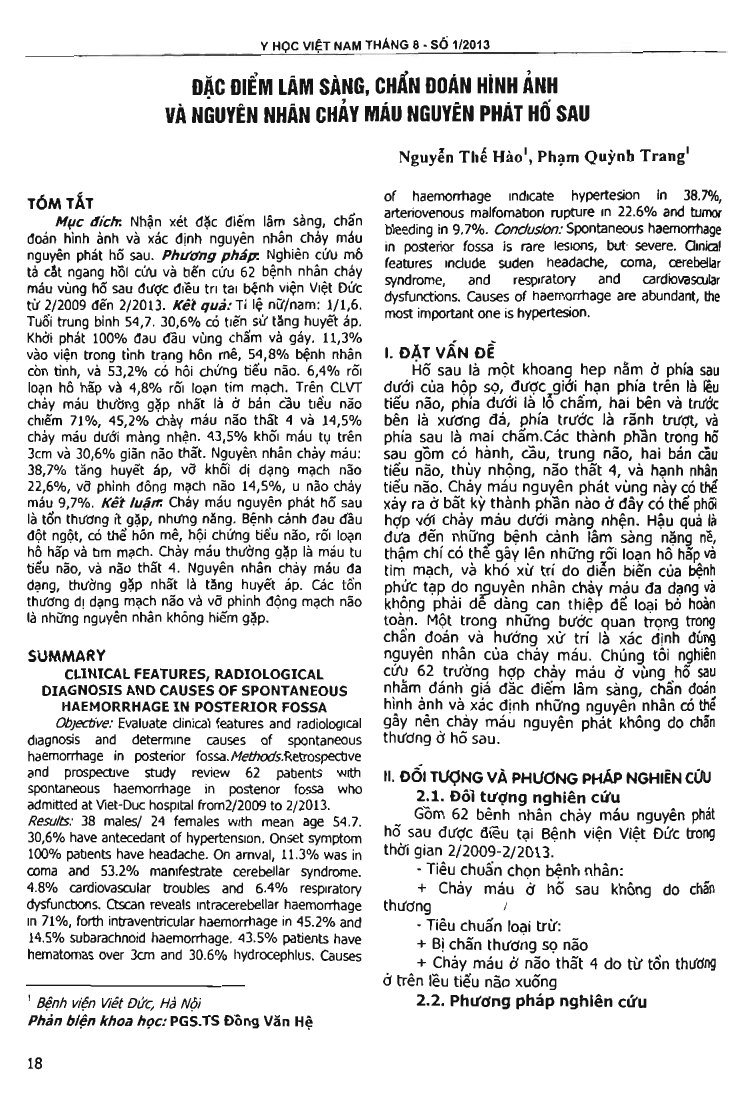
Objective: Evaluate dinical features and radiological diagnosis and determine causes of spontaneous haemorrhage in posterior fossa.Melt1ods:Retrospective and prospective study review 62 patients with spontaneous haemorrhage in posterior fossa who admitted at Viet-Due hospital from2/2009 to 2/2013. Results: 38 malesl 24 females with mean age 54.7. 30,6 percent have antecedant of hypertension. Onset symptom 100 percent patients have headache. On arrival, 11.3 percent was in coma and 53.2 percent manifestrate cerebellar syndrome. 4.8 percent cardiovascular troubles and 6.4 percent respiratory dysfunctions. Qscan reveals intracerebellar haemorrhage in 71 percent, forth intraventricular haemorrhage in 45.2 percent and 14.5 percent subarachnoid haemorrhage. 43.5 percent patients have hematomas over 3cm and 30.6 percent hydrocephlus. Causes of haemorrhage indicate hypertesion in 38.7 percent, arteriovenous malfomation rupture in 22.6 percent and tumor bleeding in 9.7 percent. Conclusion: Spontaneous haemorrhage in posterior fossa is rare lesions, but severe. Clinical features include suden headache, coma, cerebellar syndrome, and respiratory and cardiovascular dysfunctions. Causes of haemorrhage are abundant, the most important one is hypertesion.
- Đăng nhập để gửi ý kiến
